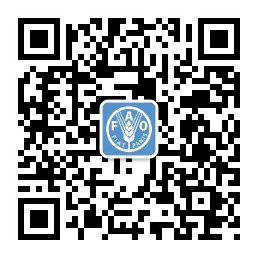Overfishing alert system: a challenge for electronic communication
FAO-EU meeting on new frontiers and projects in global knowledge exchange
Working to bring information closer to the people who really need it is one of the aims of a meeting at FAO headquarters from 20 to 22 March 2006 involving 65 experts in the field of knowledge technology and communications from universities, research institutions and industry partners across Europe.
Part of a 14.7 million euro four-year project largely co-funded by the European Union, for which FAO is providing information through its access to global fisheries databases as a test case, the meeting will discuss how computers can most usefully and rapidly select from a wide amount of information only the exact information needed on any given subject.
Organizers of the NeON project (Lifecycle Support for Networked Ontologies)selected FAO’s expertise in global fisheries information systems to help develop a warning system for depleting fish stocks.The FAO case study will be one of two selected in different sectors, fisheries and pharmaceuticals,and used by NeON to test a new approach to compiling, sharing and disseminating electronic information.
Using a grant of 680 000 euros from the EU, FAO will not only provide access to its worldwide fisheries information, but FAO information specialists will also be working side by side with other technical experts to help develop the new systems.
“Managing the world’s fish stocks is a major challenge both at present and in the future,” says FAO’s Richard Grainger, Chief of Fishery Information, Data and Statistics. “If successful, the project will help us to keep track of fisheries across the world by taking information from a wide variety of sources and providing us with rapid real-time information.”
Fish currently provide at least 20 percent of the animal protein needs of over 2.5 billion people in the world, but some fish stocks are being rapidly reduced due to overfishing, poor fishing practices and environmental degradation. Through an alert system, FAO can assist member countries in monitoring fisheries and levels of fish stocks as well as implementing the Strategy for Improving Information on Status and Trends of Capture Fisheries, adopted by the FAO Council in 2003.
At the same time, the NeON project’s aim to be universally applicable means that “staying ahead of advances in electronic information, and assisting its members to work with the new electronic media to get more information to farmers, fishers and others in poor countries, as cost effectively as possible, is contributing to closing the rural digital divide,” according to Anton Mangstl, Director of FAO’s Library and Documentation Systems Division.
Working to bring information closer to the people who really need it is one of the aims of a meeting at FAO headquarters from 20 to 22 March 2006 involving 65 experts in the field of knowledge technology and communications from universities, research institutions and industry partners across Europe.
Part of a 14.7 million euro four-year project largely co-funded by the European Union, for which FAO is providing information through its access to global fisheries databases as a test case, the meeting will discuss how computers can most usefully and rapidly select from a wide amount of information only the exact information needed on any given subject.
Organizers of the NeON project (Lifecycle Support for Networked Ontologies)selected FAO’s expertise in global fisheries information systems to help develop a warning system for depleting fish stocks.The FAO case study will be one of two selected in different sectors, fisheries and pharmaceuticals,and used by NeON to test a new approach to compiling, sharing and disseminating electronic information.
Using a grant of 680 000 euros from the EU, FAO will not only provide access to its worldwide fisheries information, but FAO information specialists will also be working side by side with other technical experts to help develop the new systems.
“Managing the world’s fish stocks is a major challenge both at present and in the future,” says FAO’s Richard Grainger, Chief of Fishery Information, Data and Statistics. “If successful, the project will help us to keep track of fisheries across the world by taking information from a wide variety of sources and providing us with rapid real-time information.”
Fish currently provide at least 20 percent of the animal protein needs of over 2.5 billion people in the world, but some fish stocks are being rapidly reduced due to overfishing, poor fishing practices and environmental degradation. Through an alert system, FAO can assist member countries in monitoring fisheries and levels of fish stocks as well as implementing the Strategy for Improving Information on Status and Trends of Capture Fisheries, adopted by the FAO Council in 2003.
At the same time, the NeON project’s aim to be universally applicable means that “staying ahead of advances in electronic information, and assisting its members to work with the new electronic media to get more information to farmers, fishers and others in poor countries, as cost effectively as possible, is contributing to closing the rural digital divide,” according to Anton Mangstl, Director of FAO’s Library and Documentation Systems Division.

